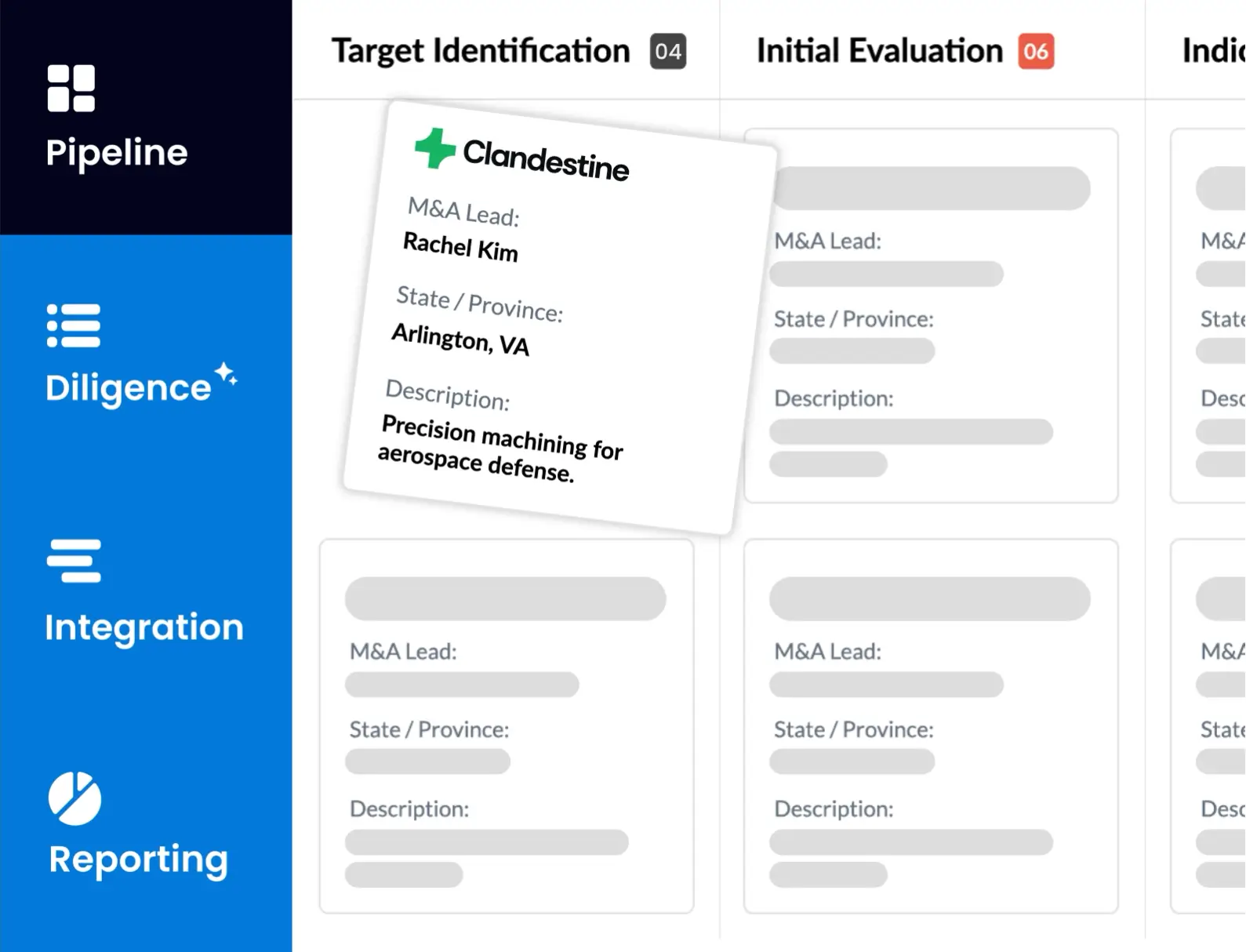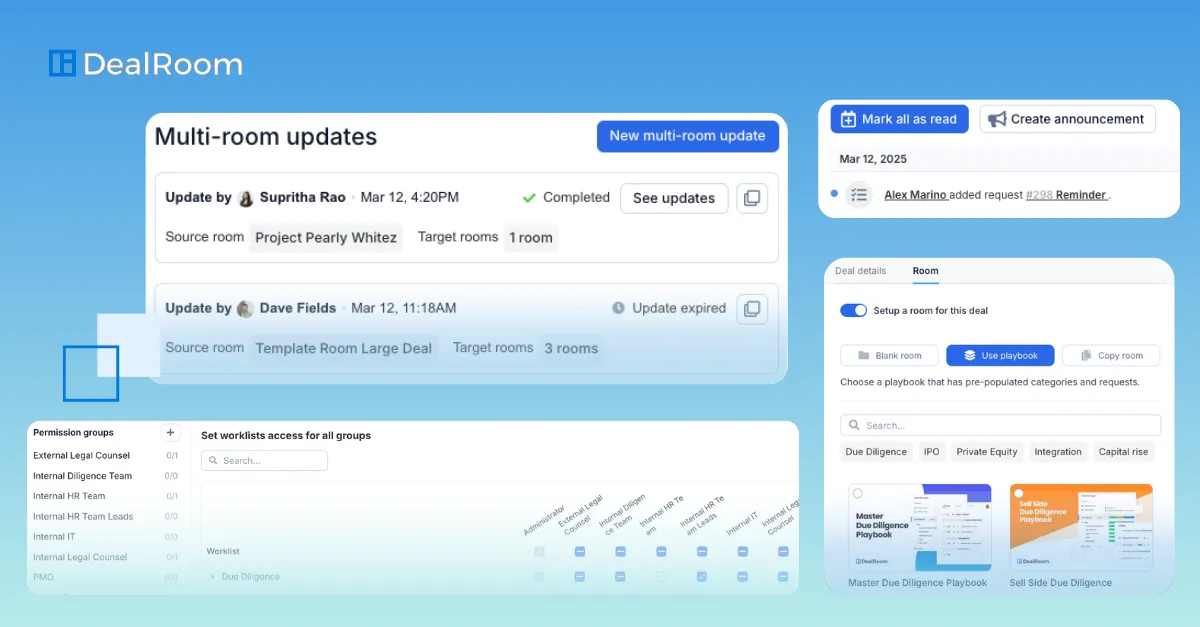Private equity (PE) has grown into one of the most powerful players in the global financial landscape, reshaping industries through buyouts, growth capital, and restructuring. In 2025, the sector finds itself at a crossroads: private equity deal flow has partially rebounded in certain areas, exits remain constrained, and fundraising is increasingly consolidated among the largest players.
This article presents current private equity statistics, including information on deal volume and distribution across regions, as well as exit trends and fundraising efforts. The data illustrates the current state of private equity while demonstrating how investors, operators, and other stakeholders are positioning themselves for the cycle ahead.
In this article:
What is Private Equity?
Private equity refers to investment funds that invest directly in private companies or publicly traded firms that have been delisted or “taken private” through buyouts. Investors put money into the funds, which are managed by general partners (GPs), and the money is used for acquisitions, growth capital, or turnaround situations.
Most of the capital is provided by limited partners (LPs) such as pension funds, endowments, insurance companies, and others. The GPs search for targets, negotiate the deal terms, and work with the portfolio companies to increase their value and maximize returns.
The four primary strategies of private equity are buyouts, growth equity, venture capital, and distressed investing. The defining characteristic of PE is the active involvement of the firms: they restructure operations, finances, and management to create value and then exit through an IPO, strategic sale, or secondary buyout.
When executed successfully, PE can benefit both the companies and the investors. If handled poorly, PE can leave a company overleveraged and more vulnerable.
The State of the Private Equity Market in 2025

Private equity began 2025 on a positive note. Larger buyouts and a pickup in strategic exits drove deal value to its highest levels since 2022, led by a 35% year-over-year increase in U.S. transactions exceeding $1 billion.
Corporate buyers were a key driver of activity, with exit value climbing 77% in the first half. Add-on acquisitions also picked up pace, representing more than three-quarters of total buyout activity as many private equity firms leaned into scale and operational synergies to drive value creation.
Deal flow slowed in a volatile second quarter, as tariff-related uncertainty and higher financing costs took their toll. Deal value in April plunged nearly 25% from the first quarter.
Elevated interest rates also increased the hurdle for returns, with GPs needing to generate more operational growth to achieve target IRRs. Smaller and mid-sized deals were hit hardest, while there were fewer mega-deals exits as firms chose to hold assets for longer in anticipation of stronger valuations.
LP appetite has remained healthy, with many investors continuing to increase their private market allocations. GPs have responded by turning to evergreen fund structures, secondary strategies, and sharpening their operational focus.
All in all, 2025 is shaping up as a transition year for the market: dealmakers are deploying capital more selectively, but with dry powder still at record highs and fundraising gravitating toward mega-funds and growth equity, the groundwork for a more robust cycle in late 2025 and 2026 is taking shape.
Private Equity Market Trends & Activity

1. Private equity accounted for 22% of total M&A activity in the Americas in 2024. Private equity accounted for $398 billion in M&A volume in the Americas in 2024 (22% of total activity), down sharply from $865 billion (28%) in 2021. (McKinsey & Company)
2. Private equity accounted for 29% of total M&A activity in EMEA in 2024. In 2024, private equity contributed $243 billion to M&A activity in EMEA (29% of total volume), down from $483 billion (32%) in 2021.(McKinsey & Company)
3. PE accounted for 16% of M&A activity in the Asia-Pacific region in 2024. APAC M&A saw $126 billion in private equity contributions in 2024 (16% of activity), a steep drop from $279 billion (21%) in 2021. (McKinsey & Company)
4. Dry powder remains a pressing challenge for buyout firms. The industry’s unspent capital eased from $1.3 trillion to $1.2 trillion in 2024, but aging dry powder (capital held for four years or more) rose to 24% of the total, up from 20% in 2022. This signals ongoing difficulty for GPs in sourcing high-quality, reasonably priced targets. (Bain & Company)
5. Dry powder deployment could accelerate in the coming years. Declining interest rates are expected to boost leveraged buyouts, with markets pricing in a 62.1% chance of a cut by September 2025. (FedWatch)
6. Private equity firms are leaning into opportunity despite market volatility. In a March 2025 survey, nearly three-quarters of GPs reported above-average risk tolerance, a counterintuitive finding given the uncertainty. That appetite translated into higher activity, with PE deal volume up 17% and deal value surging more than 40% in H1 2025, led by large transactions across retail, transportation, energy, financial services, and infrastructure. This shows that while the industry is willing to take risks, the follow-through often depends on shifting market conditions. (EY)
7. Those conditions turned more challenging in Q2 2025 as tariff uncertainty created fresh pockets of disruption. Since April, a significant share of investors have renegotiated, withdrawn, or delayed deals. Specifically, 30% of firms reported renegotiating transactions due to valuation swings, and over one-third stated that their portfolio companies had also done so. The result: a market where risk appetite remains high, but deal execution is uneven. (EY)
8. Smaller buyers pulled back sharply in early 2025. In H1, their acquisitions dropped 44% and exits fell 38% year over year, with the investment-to-exit ratio down about 10%, indicating acquisitions slowed more than exits. (Private Equity Info)
9. Mid-sized deals ($50M–$250M) followed a similar pattern. Investments were down by one-third, exits by about one-quarter, and the investment-to-exit ratio slipped 10%, reflecting broad caution across this segment. (Private Equity Info)
10. Large deals ($250M–$500M) showed a different imbalance. Acquisitions declined by ~29%, while exits decreased even more rapidly, at 36%. That pushed the investment-to-exit ratio up 10%, suggesting firms are holding assets longer while only selectively pursuing new opportunities. (Private Equity Info)
11. Mega deals ($500M+) experienced the sharpest exit slowdown. Investments declined just 22%, the smallest drop across all groups, but exits collapsed by 43%. This lifted the investment-to-exit ratio by 38%. Rather than expanding, larger players appear to be delaying sales, likely waiting for improved conditions in 2026, including lower rates or stronger valuations. (Private Equity Info)
Private Equity Deal Flow
12. Buyout activity rebounded in 2024 after a historic slump. Investment value rose 37% year over year to $602 billion (excluding add-ons). The recovery was fueled by easing rates, improving macro sentiment, and narrowing valuation gaps. Financing conditions also strengthened, with syndicated loan issuance up 83% and private credit expanding, giving GPs room to deploy $282 billion in aging dry powder. This set the stage for strong momentum heading into 2025. (Bain & Company)
13. Deal sizes surged even as volumes rose modestly in 2024. The number of buyout deals grew 10% year over year to roughly 3,000, but average deal size jumped to $849 million, the second-highest on record. Billion-dollar-plus transactions dominated, accounting for 77% of total deal value. (Bain & Company)
14. Deal activity picked up across major regions in 2024. In North America, deal value rose 34% on a 9% increase in volume, while Europe saw even stronger momentum with deal value up 54% on the same 9% rise in transactions. (Bain & Company)
15. Regional deal trends in 2024 showed strength in mid-to-large transactions but mixed results in Asia-Pacific. In North America and Europe, deals sized $2.5-10 billion grew as a share of total value. Asia-Pacific deal value rose 11% despite fewer transactions, with double-digit gains in several markets offset by slower growth in China and a decline in Japan after a strong 2023. China’s share of APAC deal value has fallen sharply, from 50% in 2020 to just over 25% in 2024. (Bain & Company)
16. Public-to-private (P2P) transactions remained a dominant force at the top end of the market in 2024. Global P2P deal value reached nearly $250 billion, with these transactions accounting for almost half of all $5 billion-plus deals in North America. Notable examples include Vista Equity Partners and Blackstone’s $8.4 billion buyout of Smartsheet. Despite strong U.S. equity markets, specialists continue to identify mispriced assets, while weaker European markets have created further opportunities. (Bain & Company)
17. Private equity’s 2025 story began with strong momentum. Early in the year, favorable conditions (open credit markets, easing borrowing costs, low inflation, and falling rates) fueled a surge in buyout activity, pushing deal value to its highest level since Q2 2022. Notable transactions included Sycamore Partners’ $23.7 billion acquisition of Walgreens Boots Alliance. Exit activity was also robust, highlighted by GTCR’s $24.25 billion sale of Worldpay to Global Payments and Constellation Energy’s $26.6 billion acquisition of Calpine, backed by Energy Capital Partners and CPP Investments.(Cherry Bekaert)
18. That momentum carried into early 2025, but deal activity cooled in Q2 after a robust start to the year. Following several large Q1 transactions, new tariff policies fueled volatility across global markets, resulting in a 24% decline in deal value and a 22% drop in deal count in April. (Cherry Bekaert)
19. Growth equity remained active but lost share in Q2 2025. It accounted for 22.3% of PE transactions, slightly above the five-year average but down 30 bps from Q1. In value terms, growth equity represented just 8.3% of total PE deal value (the lowest since Q2 2022 and well below the five-year average of 11.8%) as blockbuster buyout deals dominated the quarter. (Cherry Bekaert)
20. Large-scale add-ons dominated private equity activity in Q2 2025. Despite economic uncertainty, sponsors continued to press ahead with major add-on acquisitions, facilitated by a more flexible regulatory environment. Add-ons accounted for 75.9% of all buyout activity, up 250 basis points from Q1, 150 basis points year over year, and 340 basis points above the five-year average of 72.5%. Analysts expect this trend to persist as firms pursue scale, cost efficiencies, and greater pricing power. (Cherry Bekaert)
Exit Pressures & Liquidity Challenges

21. Private equity exits have slowed sharply, creating a backlog that continues to swell. By March 2025, firms were holding more than 30,000 portfolio companies, nearly half of which were acquired since 2020. Even as the median exit size hit a new high in Q2 2025, the inventory of PE-backed companies grew to 12,552, which is equivalent to 8.5-9 years of exits at recent rates. This backlog remains a central challenge, pressuring returns and fundraising even as exit activity shows signs of recovery. (PwC; Cherry Bekaert)
22. Private equity holding periods are at historic peaks, adding to exit pressure. In 2024, the average hold reached 8.5 years, more than double the 4.1 years observed in 2007. By 2025, the median was 5.8 years, reflecting deals struck at high valuations in 2019. Historically, downturns such as the dot-com bust, Great Recession, and COVID extended holding periods by 1-1.5 years, with normalization taking 4-6 years. This suggests that even if market conditions improve, many assets are unlikely to cycle out until late 2025 or 2026. (McKinsey; Private Equity Info)
23. Private equity exits picked up in Q1 2025, rising to 903 deals from 820 a year earlier. While this represented an improvement, the pace remained insufficient to alleviate the industry’s growing backlog of over 30,000 companies. To bridge the gap, firms increasingly turned to secondary solutions, such as continuation funds, which provide partial liquidity but leave many assets on their balance sheets. (PwC)
24. Exits remain a central focus for private equity, with activity rebounding in early 2025. In the first half of the year, firms announced 215 major exit transactions worth $308 billion, marking the highest mid-year total in three years. Strategic buyers drove this momentum: while IPOs stayed muted and secondary buyouts fell 9% by volume, sales to strategics jumped 26% in number and more than doubled in value. Despite these gains, exit volumes are still insufficient to meaningfully reduce the industry’s backlog. (EY)
25. Exit conditions in 2025 are showing early signs of recovery. Successful IPOs and renewed secondary market activity (including major deals by the NYC pension system and Yale’s endowment) point to improving momentum. A narrowing valuation gap is helping sellers offload assets more quickly, fueling 101 IPOs so far this year, up 44.3% from the same period in 2024. Still, while market conditions are supportive, the structural reality of extended holding periods means the bulk of assets may not come to market until late 2025 or beyond. (Renaissance Capital)
26. The exit picture grew more volatile as the year progressed. Q2 recorded about 314 exits worth $118.5 billion, down 46% in value and 25% in count from Q1, with both measures falling below pre-pandemic norms. Yet across the first half, exit value still rose 69% year over year (excluding Venture Global LNG’s $58.7 billion listing) and more than doubled when it was included. Exit counts also climbed 18%, showing that while Q1 momentum wasn’t enough to clear the backlog and Q2 slowed sharply, H1 overall still outperformed the prior year. (Cherry Bekaert)
27. LP pressure is pushing private equity firms to accelerate exits, even at discounts. PE funds are holding more than 30,000 assets awaiting monetization, with 35% held over six years, many of which were bought at higher valuations in a low-rate era. To generate liquidity as funds mature, 40% of firms say they’d accept a 5-10% markdown on long-held assets, while nearly a quarter would accept discounts of 10-20%. (EY)
28. Early preparation is proving key to maximizing exit valuations. According to EY’s Private Equity Exit Readiness Study, 93% of PE professionals say early exit planning improves valuations. After slower exit years and a high-rate environment, PE firms are prioritizing early preparation: 88% now undertake targeted exit readiness activities during an asset’s hold period, and nearly half begin planning 12-24 months before sale. (EY)
29. Data and finance challenges remain major hurdles for private equity exits. In an EY survey, 65% of firms said they struggle to fully reflect value creation in exit EBITDA, while 41% cited insufficient data granularity to support the equity story. The finance function faces particular pressure, with both data quality and talent considerations influencing exit success. (EY)
30. Private equity investments continue to outpace exits, but at a slower rate. The current investment-to-exit ratio stands at about 2:1, down from nearly 3:1 in 2022-2023, meaning industry inventory is still building but less rapidly. Political uncertainty from elections, higher interest rates that keep debt costs elevated, valuations that haven’t fallen enough to reignite activity, and inflated seller expectations are all constraining deal flow. (Private Equity Info)
Capital Formation & Fundraising
31. Private equity fund assets grew significantly from 2020 to 2023. From 2020 to 2023, U.S. private fund assets grew 34% to $28 trillion (nearly matching public funds) while the number of funds surged by almost 60% to over 100,000, fueling further dealmaking. (McKinsey & Company)
32. Buyout fundraising fell 23% in 2024 (and 11% below the five-year average) after a record 2023. Fund closures also dropped to 2017 levels, with over a third of funds taking more than two years to close. The slowdown reflects a lagging response to industry cash flows: record drawdowns in 2021 were followed by a slump in exits as rates rose, reducing distributions and prompting LPs to scale back commitments. North America saw a 34% decline, while Europe held steady and Asia rose 13%, underscoring that while the broader market weakened, regional patterns were uneven. (Bain & Company)
33. Fundraising has become increasingly concentrated, with LPs favoring large, established funds and avoiding smaller managers. High short-term bond yields and slower capital recycling have reinforced this “flight to safety,” pushing more money into mega-funds - the highest concentration in 15 years - while lower-tier GPs face longer fundraising cycles (averaging 20 months) and tighter LP budgets. (Franklin Templeton)
34. With exits sluggish, private equity firms leaned heavily on alternative liquidity strategies in 2024-25. GPs deployed tools such as minority stake sales, dividend recaps, secondaries, and NAV loans, driving $410 billion in liquidity events across 30% of buyout portfolio companies. Still, these measures have not solved the core challenge: distributions remain at record lows relative to NAV, and LP contributions have matched or exceeded payouts in five of the past six years. Persistent liquidity pressures continue to weigh on many funds despite pockets of fundraising success. (Bain & Company)
35. The capital base for private equity is evolving. Private wealth and sovereign wealth funds (SWFs) are expected to drive much of the growth in alternatives over the next decade. Private wealth is particularly compelling: while individual investors hold roughly half of global capital, they represent just 16% of alternative assets today, leaving significant room for expansion. (Ocorian)
36. SWFs are becoming a major force in private equity. With assets projected to grow from $6 trillion to $17 trillion by 2035, leading players like ADIA and GIC are boosting allocations to alternatives, emphasizing partnerships and co-investments with large funds. Their scale and sophistication are reshaping capital flows, creating both opportunities and challenges for GPs. (Ocorian)
37. Private equity firms are stepping up efforts to reach U.S. retail investors through 401(k) retirement plans. Several large groups have launched products tailored for this market. KKR partnered with Capital Group to roll out two credit-focused interval funds, designed to manage liquidity by limiting redemptions, with additional vehicles like model portfolios and target date funds in development. Apollo and State Street introduced a fund in April 2025, allowing 401(k) participants to allocate 10% to private markets. In May 2025, Empower (managing $1.8 trillion in retirement assets for 19 million people) announced a partnership to add private credit, equity, and real estate to certain plans. (PwC)
38. Despite these efforts to broaden the investor base, the overall U.S. fundraising picture in H1 2025 weakened. Private equity’s share of capital raised fell to 56%, down from 64% in 2024, while real assets climbed to 26% from 19%. Overall, U.S. PE fundraising declined 22% year over year, showing that liquidity challenges are constraining capital formation at the aggregate level, even as certain strategies continue to draw inflows. (Ropes & Gray)
39. Growth equity was a notable exception, bucking the broader fundraising slowdown. In H1 2025, growth funds accounted for 24% of capital raised, with fundraising up 14% year over year. Four of the 10 largest fund closes came from growth strategies, alongside five from buyouts. The biggest close was Thoma Bravo’s 16th flagship fund at $24.3 billion, the largest PE fund raised in 2024 or 2025. This underscores that while mega-funds and growth strategies remain attractive to LPs, fundraising is uneven across the industry. (Ropes & Gray)
Industry Trends

40. Technology dominated global buyout value from 2021–2024, averaging 27.7% over five years and peaking at 33% in 2024. Its share grew steadily from 2021 onward, with only a slight dip between 2023 and 2024, with momentum extending into tech-healthcare plays such as KKR’s $10 billion valuation acquisition of a 50% stake in Cotiviti from Veritas Capital. (Bain & Company)
41. Beyond technology, financial services and industrials saw strong rebounds in 2024. Deal value in financial services jumped 92% year over year, while industrials climbed 81% after a difficult 2023. Notable transactions included Sixth Street’s $5 billion public-to-private acquisition of insurer Enstar. (Bain & Company)
42. The pharmaceutical industry saw a sharp pullback in dealmaking. From H1 2024 to H1 2025, deal volume declined 19% and value dropped 34%. Tariff risks and policy uncertainty weighed heavily, with autos and pharmaceuticals among the hardest-hit sectors. (PwC)
43. The retail and consumer sectors saw a 46% increase in deal value, even as volume declined. In 1H 2025, retail and consumer deal value rose sharply (34% excluding megadeals, 46% including) despite exposure to trade barriers, while deal volume declined, signaling a shift toward fewer, higher-value transactions. (PwC)
44. In 1H 2025, aerospace and defense deals grew 10% in volume and 21% in value (excluding megadeals). Including megadeals, value surged by 152%, as geopolitical tensions drove domestic defense investment. (PwC)
45. The power and utilities sector posted steady growth in 1H 2025, with deal volume up 2% and value up 3% (excluding megadeals). With megadeals, value soared 88%, supported by rising AI-related energy demand. (PwC)
46. Chemicals saw deal volume rise 6% and value climb nearly 37% in 1H 2025 (excluding megadeals). With megadeals, value increased by 162%, although momentum was heavily front-loaded in late 2024 and early 2025, before slowing sharply in Q2 2025. (PwC)
47. Strategic M&A is poised to accelerate in the coming years, particularly in tech and energy, as companies rush to develop and scale advanced AI models. With as much as $7.5 trillion in cash on corporate balance sheets, firms are well-positioned to pursue growth-oriented investments and acquisitions. (McKinsey & Company)
48. Private equity activity in AI and machine learning has expanded sharply over the past decade. Platform investments reached their peak in 2021 and continue to be a key driver of sector growth. Since 2010, 342 PE firms have invested in AI/ML companies, making 650 platform investments (including 73 exits) and 200 add-on deals. (Private Equity Info)
49. Add-on investments in AI and machine learning are on the rise. Since 2020, PE firms have steadily increased add-on activity in the sector, mirroring the broader industry trend. The market peaked in 2023 with more than 50 add-on deals, and data from October 2024 showed continued strong momentum. (Private Equity Info)
50. Technology defied the broader slowdown in Q2 2025 exits, posting its strongest quarter since 2021. The sector’s resilience, scalability, and digital transformation tailwinds helped sustain momentum, even as other industries weakened. Tech recorded three $5B+ exits, led by GTCR and FIS’s $24.3B sale of Worldpay to Global Payments, one of the largest PE-backed tech exits ever and the biggest since AppLovin’s 2021 IPO. As part of the transaction, Global Payments sold its issuer solutions unit back to FIS for $13.5B. Other major deals included Insight Partners’ $5.1B sale of Dotmatics to Siemens and TJC’s $5B sale of Silvus Technologies to Motorola Solutions. (Cherry Bekaert)
Frequently Asked Questions
What is the overall health of the private equity market in 2025?
The market is in a transition phase. Deal activity rebounded early in the year, but volatility, tariffs, and high interest rates slowed momentum in Q2. Dry powder is still at record levels, fundraising is consolidating around mega-funds, and the groundwork is being laid for a stronger cycle in late 2025 and 2026.
Where is private equity most active geographically?
North America and Europe continue to dominate activity, with both regions seeing large deal values and strong rebound momentum. Asia-Pacific is more mixed: China’s share of deal value has fallen sharply, while other markets remain relatively resilient.
Which sectors are attracting the most private equity investment?
Technology leads global buyouts, accounting for nearly a third of deal value, with strong activity in AI and machine learning. Financial services, industrials, retail/consumer, energy, and chemicals are also showing strong rebounds, while pharmaceuticals and autos have slowed.
What is the biggest challenge facing private equity right now?
The exit slowdown is the industry’s central challenge. Firms are holding more than 30,000 portfolio companies, with many acquired during high-valuation periods, creating a backlog and liquidity pressures that weigh on fundraising and distributions.
How are firms coping with the exit slowdown?
Firms are turning to continuation funds, secondary transactions, minority stake sales, and dividend recaps to create partial liquidity. They’re also extending holding periods and preparing assets earlier for sale, but these measures haven’t fully relieved the backlog.
Who is investing in private equity funds?
Traditional LPs like pension funds, endowments, and insurance companies remain major backers, but sovereign wealth funds and private wealth investors are growing rapidly. Retail investors are also being targeted through 401(k) products and interval funds.
What is the "investment-to-exit ratio" and why does it matter?
This ratio compares new investments to completed exits. In 2025, it sits around 2:1, down from nearly 3:1 in prior years. A high ratio signals that firms are buying more companies than they’re selling, building inventory and pressuring liquidity, while a lower ratio suggests a better balance between capital deployment and portfolio realizations.
Key Takeaways
- Exits are the biggest challenge. A backlog of 30,000+ companies, record-long holding periods, and slow exit activity are creating liquidity pressures that weigh heavily on returns and fundraising.
- Fundraising is consolidating. Capital is flowing into mega-funds and growth equity, while smaller managers face longer fundraising cycles. Sovereign wealth funds, private wealth, and even retail investors (via 401(k)s) are reshaping the LP base.
- Technology and large-scale deals dominate. Tech (especially AI/ML) remains the top sector, while billion-dollar-plus buyouts and add-ons drive activity. Smaller and mid-sized deals are struggling the most under high interest rates and volatile conditions.
Private equity in 2025 is marked by contrasts: historic highs in dry powder, yet slower deployment; early-stage recovery in exits, yet momentum remains uneven; and strong fundraising at the top end of the market, while smaller managers continue to struggle. The task for GPs and LPs has shifted from capital raising to capital deployment, underwriting assets through longer holding periods, and preparing for a challenging exit environment in uncertain macroeconomic conditions.
That calls for pinpoint accuracy in due diligence, seamless collaboration across deal teams, and a disciplined, surgical approach to integration and portfolio management. This is where DealRoom can create genuine leverage. Purpose-built for private equity, DealRoom’s M&A Platform is engineered to optimize M&A workflows, enabling dealmakers to move faster with AI-driven diligence, and giving them the single source of truth they need to manage deals from pipeline to exit.
Adapting to a new environment of higher rates, uneven valuations and, inevitably, shifting LP expectations, firms with the smartest tools at their disposal will be well positioned to win. Private equity’s next cycle will reward operational excellence and data-driven execution, and DealRoom gives dealmakers the tools they need to get there.



















.png)
.webp)



.webp)
.webp)
.webp)





.png)
.png)
.png)
.svg)

.svg)
.png)
